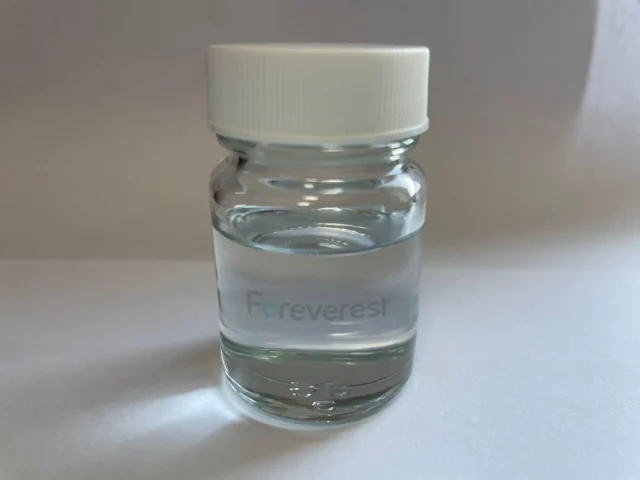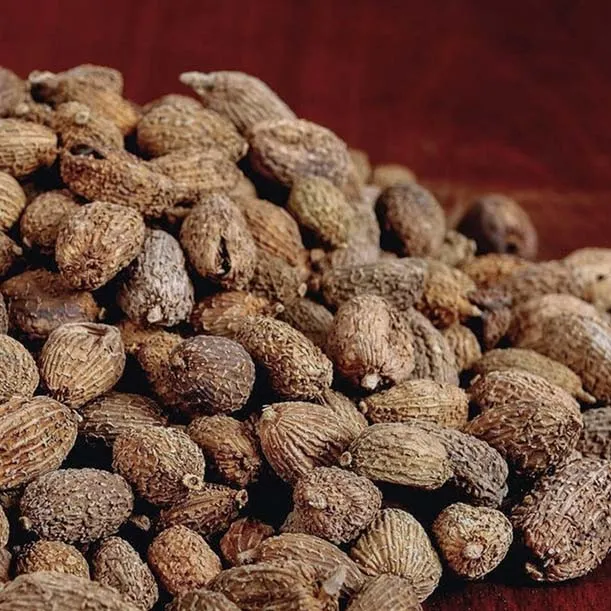Feature Article, Company News, PR
New Ingredient Introduction – (±)-Borneol Acetate

Feature Article, Company News, PR

Cover pic © belvedere04, inaturalist.org
Bornyl acetate is a monoterpene compound that appears as a colorless liquid or white crystals. It releases a refreshing blend of scents that evoke vanilla and pine, accompanied by a sugary fragrance. Recognized by the FDA (JECFA.1864) and classified as GRAS (FEMA.4080), this flavoring is employed in the formulation of herbal and woody fragrances.

l-Borneol acetate sample, photo by Foreverest®
In the assessment of natural borneol’s quality, bornyl acetate has emerged as an important target1. In the past, testing institutions only focused on d-Borneol, Camphor, and isoborneol as the markers for identifying borneol content. Since synthetic borneol contains large amounts of isoborneol, which has certain toxic side effects, and may convert into camphor during storage, further increasing toxicity, natural borneol extracted from the leaves of the borneol camphor tree (Cinnamomum camphora) holds unmatched application value. Natural bornyl acetate is also a key component of the volatile oil in the traditional Chinese medicinal herb Villous Amomum Fruit. In Amomum villosum Lour., the content of bornyl acetate can be as high as 59.60%. It has effects such as maintaining pregnancy, pain relief, anti-inflammation, and inhibiting intestinal smooth muscle spasms, with particularly notable effects on maintaining pregnancy, anti-inflammation, and pain relief2.

In traditional Asian medicine, the volatile oil of dried Amomum villosum is rich in borneol acetate, which is believed to have the effects of relieving pain and stabilizing pregnancy.
Globally, bornyl acetate is widely found in Ledum palustre from Changbai Mountain, Canadian hemlock (T.canadensis), natural Abiessibirica essential oil (Siberian fir), cinnamon twig essential oil (Cinnamomum osmophloeum Kaneh), Rocky Mountain Douglas-fir (Pseudotsuga menziesii var. glauca), and wild chrysanthemum (Chrysanthemum indicum L.). Bornyl acetate is usually soluble in ethanol and other organic solvents and slightly soluble in water. It is relatively stable under normal conditions but can hydrolyze into borneol and acetic acid under acidic or alkaline conditions. Due to its high safety, it is used as an important chemical raw material and organic synthesis intermediate, and is widely applied in the daily chemical, food, and cosmetic industries.
Bornyl acetate exists in three optical isomers: L-Bornyl acetate, d-Bornyl acetate, and dL-Bornyl acetate. In nature, it generally occurs in the L-form optical isomer. Typically, when bornyl acetate is mentioned, if its optical properties are further specified, it is generally assumed to refer to L-Bornyl acetate.

Borneol ©I nternationalInstitute of Meridian Essence
L-Bornyl acetate naturally occurs in the needle oils of pine and fir trees, such as Canadian hemlock and white fir, and is also found in coriander, thyme, and valerian essential oils. D-Bornyl acetate is mostly found in the needle oils of pines, such as white cypress and black pine, and is also present in lavender essential oil. The preparation of natural bornyl acetate involves direct isolation from pine oil: L-Bornyl acetate can be isolated from the needle oils of pines and firs, while d-bornyl acetate can be isolated from the needle oils of cypress trees.
L-Bornyl acetate is characterized by a bornyl group (a bicyclic terpene structure) esterified with an acetate group. L-Bornyl acetate and bornyl acetate may be very similar in terms of scent and application. L-Bornyl acetate has a pleasant fragrance reminiscent of pine and citrus, making it popular in perfumes, cosmetics, and other fragrance products, where it imparts a fresh, woody, and slightly sweet aroma.
The preparation of bornyl acetate is typically achieved by using Camphene under the action of a catalyst or by reacting borneol with acetic anhydride in the presence of a catalyst. It is usually an intermediate product in the synthesis of camphor.
In addition to its traditional use in flavoring for food and daily chemical products, bornyl acetate has now been developed for applications in other markets.
Bornyl acetate has been approved by the European Union’s EFSA for use in feed for non-food animals3 , as well as for pigs, cattle, and poultry. The maximum dosage is 0.5 mg/kg. Bornyl acetate is typically added to feed in the form of a premix. According to EU authorization (32024R1989), the recommended maximum content of L-Bornyl acetate in complete feed with 12% moisture content is 5 mg per kilogram.
Both d-Bornyl acetate and L-Bornyl acetate have demonstrated pheromone activity against the American cockroach4, with the D-form exhibiting stronger sex pheromone activity than the levorotatory form, at doses of 0.05 mg and 0.5 mg, respectively. The results indicate that bornyl acetate can be used as an active substance for cockroach control. Other studies have shown that bornyl acetate can also be used for controlling the green peach aphid (Myzus persicae)5, the booklice (Liposcelis bostrychophila), and the red flour beetle (Tribolium castaneum)6.
Research has shown that hyssop oil, which contains L-Bornyl acetate, isopinocampheol, and pinocamphone, has inhibitory effects on the plant pathogenic fungi Pyrenophora avenae and Pyricularia oryzae, which cause powdery mildew in barley and apple, respectively7.
L-Bornyl acetate, an important component of traditional herbal medicine, has long been recognized for its significant anti-inflammatory effects8. It is typically used in the form of plant essential oils, where the synergistic effects of different monomers produce results. Further research has shown that bornyl acetate exhibits high activity against superoxide dismutase (SOD)9, providing whitening and antioxidant effects when applied in cosmetics.
Additionally, the pleasant aroma of bornyl acetate has therapeutic effects, calming the mind and soothing emotions10. Related studies11 indicate that L-Bornyl acetate can soothe emotions similarly to 1,8-Cineole, but unlike 1,8-Cineole, it does not cause hypersensitivity reactions.
L-Bornyl acetate is a well-established fragrance ingredient, whose pleasant aroma can be used not only in flavoring food and daily chemical products but also in feed flavoring and aromatic therapy applications. The L-Bornyl acetate supplied by our company is prepared from high-quality raw materials, differentiating it from conventional market products, and can meet the unique research and development needs of our customers.